How to Prepare for a Successful Farm Website Kickoff
Checklists and conversational prompts to help you stress less. The faster you have everything ready, the faster we can build your website!
Since we need everything up front in order to start on your new farm website, it can be helpful to get a headstart on collecting everything you’ll need, and thinking through all the changes a new website will bring to your business!
Download our fillable checklist!
1. Gather Your Resources
Files, Photos, Logins and Access
Get a handle on your organization’s digital resources before your kickoff call to maximize our time together (and minimize any changes you’ll have to make later)!
Use this checklist reference to check in on digital resources you may have already. Some items may not apply to your organization, and no need to set up anything new!
High-res photos: Collect and/or take product, farm/organization, and staff photos. You'll want the originals (not resized or edited) if you can find them! If you find your photo albums a little sparse, it might be time to consider stock photos (which we can help with and offer as an add-on service)
You’ll send us high resolution photos, and then we will resize and optimize the file sizes and load time for the website. As a general rule of thumb, look for photo files that are at least 600 KB. Many originals will be 1 or 2 MB.
Logo Files: Track down your up-to-date logo files. Vector formats are preferred because they can scale up or down without loss of clarity. These file names usually end in .svg, .ai, or .eps. (We do offer logo vectorization if you can't find them — check your quote for more info.)
Branding: Put some extra thought into your brand, brand colors, and brand voice, if you haven't already. How do you want customers to feel when they’re interacting with your brand? What keywords would you use to describe your brand?
Account Logins and Admin Access: If you already have any of these accounts, make sure you (or someone at your organization) is able to log into accounts for your organization’s social media pages, email marketing services, and any other relevant websites. Verify that at least one person has admin access and can grant access to other people — especially if access has been regularly transferred among people in your organization! Some accounts you may want to check are:
Facebook
Instagram
YouTube
Website domain registrar (GoDaddy, Ionos, etc.)
For these following platforms, there’s no need to create an account if you don’t already have one — we’ll help when the time comes!
Email Marketing - Drip, Klaviyo, Mailchimp, etc.
Google Analytics
Existing or previous website platforms (Square, Shopify, GrazeCart, WordPress, etc.), or saved pages from any previous website you are wanting to use as a resource.
Content: Collect any content or writing related to what you'll have on your website. Blogs, recipes, written summaries about your farm, etc. can all be helpful to have on hand to pull from
Reviews, Testimonials, and Articles: Collect the good things people have said about your organization! Testimonials can come from emails, social media posts, or even in-person conversations. If someone said something nice in passing, you can write it down and use it as a review (with permission, of course)! If you’re a new organization, or having trouble finding any references, consider reaching out to customers, friends, or family who have tried your products or worked with you to see if they’ll share a few nice words!
Frequently Asked Questions: Do you find yourself answering the same questions over and over? These are great to gather and set aside for when it’s time to write your FAQs section!
2. Settle On Your Products and Offerings
If you haven’t already, take some time to go over all your products and offerings. Think about any special considerations your products have, and how you want customers to be able to learn about them or purchase them. You may surprise yourself with how many little details there are — and they might start to add up into big things to really think about!
These items may not apply to your farm/business, especially if your website does not include e-commerce functionality.
What You Want To Sell and How You Want to Sell It
Your Products: Some items to consider (and maybe make sure you have written down!):
Pricing information
Packaging and product sizes
Whether your products have variants (like color, quality grade, sizes or size ranges)
Detailed product descriptions
How You Want to Sell Your Products: Consider the following:
Product availability to customers – are any of your products only at specific locations? Do you have any products you want to limit to only pickups, or only shipping?
If you’re considering bundles or boxes, what’s in them? Do you need flexibility for what’s in them, or is it the same thing every time?
If you’re considering subscriptions, what products will be available for subscription? Are some products less consistent or not good candidates for recurring orders?
Discounts and Incentives:
Do you want to offer new customer incentives? How much?
Do you want to offer price breaks on shipping?
How much, and for what size orders?
Does this need to change based on delivery location / shipping zone?
Volume price breaks? Coupons?
Any other discounts or incentives you want to offer?
Do these discounts or incentives affect how you’re pricing your products or services?
Customer Service: Think about how you want customers to be able to contact you or ask questions. Consider what methods of communication your organization has the capacity to handle consistently and reply to quickly.
Do you need to limit customer contact to less time-sensitive communication methods like a contact form, emails, and a voicemail box?
Do your customers particularly value being able to reach someone on the phone?
Do you maybe need a new phone number, or to set up a separate email address for communicating with customers?
Whose responsibility is it to answer questions or concerns coming in through the website?
3. Organize Your Operations (for E-Commerce)
Get into the nitty gritty of how e-commerce is going to work for your team. Think about how you will implement a system to ensure order deliveries and pickups are consistent and reliable. Really dig into the details for both your team and your customers – for e-commerce, it's extra important to set clear expectations up front.
Use these checklist items as conversational prompts, and talk frankly about what your team has the time and energy to consistently execute on.
All of these items may not apply to your farm or organization, especially if your website does not include e-commerce functionality.
Conversations to Have About Logistics and Operations
Are you offering pickups? If so:
Where and when can customers pick up?
How does fulfillment work? Who is packing orders and how much lead time do they need?
Who will be available for customers coming to pick up orders, and when will they be available?
Are your products perishable and need to be packed with coolant or require a temperature controlled environment at pickup locations?
Are you offering local delivery? If so:
What days will you offer local delivery? (And how often do you really want to be out on delivery routes?)
What kind of lead time do you need to prepare orders? Do you need order deadlines?
How much of a radius do you want to be delivering to? Are there special geological considerations like mountains or river crossings, or infrastructure considerations like city rush hour traffic that will limit your realistic delivery area?
Do you want local delivery to have an extra cost? Should there be pricing tiers for different delivery ranges?
Are you offering shipping? If so:
How does fulfillment work? Who is doing what and when?
Where can you feasibly ship your products? Consider perishability in particular.
Do you only want to offer ground shipping? Will your products make it to your customer in good condition after more than 2 days, so you should only ship to people in a 1 or 2 day ground range?
Do you want to offer more expensive air shipping for customers far away?
What shipping offerings make sense for your customer base and organization size?
How much lead time do you need to pack up products and ship orders?
Additionally, what day(s) do you need to ship orders to make sure orders aren’t getting stuck on a truck over the weekend? When you consider your lead time, does this impact when customers need to order by?
Do you need special packaging like insulated liners, or coolants like gel packs or dry ice? How much weight and cost is the coolant adding to your shipped order, beyond the actual product weight?
How much do you want customers to pay for shipping? How is it priced in – as an up front shipping cost, shipping + handling/fees, or is it “free” shipping built into product cost? Really drill down on your costs for shipping – for food, it's often much more than the box and shipping cost.
When the time comes to build the website, you’ll need to know which states you’re shipping to, and what you want to charge in each state. (If Shopify or Square, shipping will be by state. If GrazeCart, it can be by state or based on sets of zip codes.)
Download our fillable checklist!
4. Ask Grapevine For Help!
We know there’s a lot to think about. The purpose of this list is not to overwhelm, but to start conversations and encourage preparation, avoiding stress and surprises later in the project.
If you’re overwhelmed or need a hand, let us know and we can book a call!













